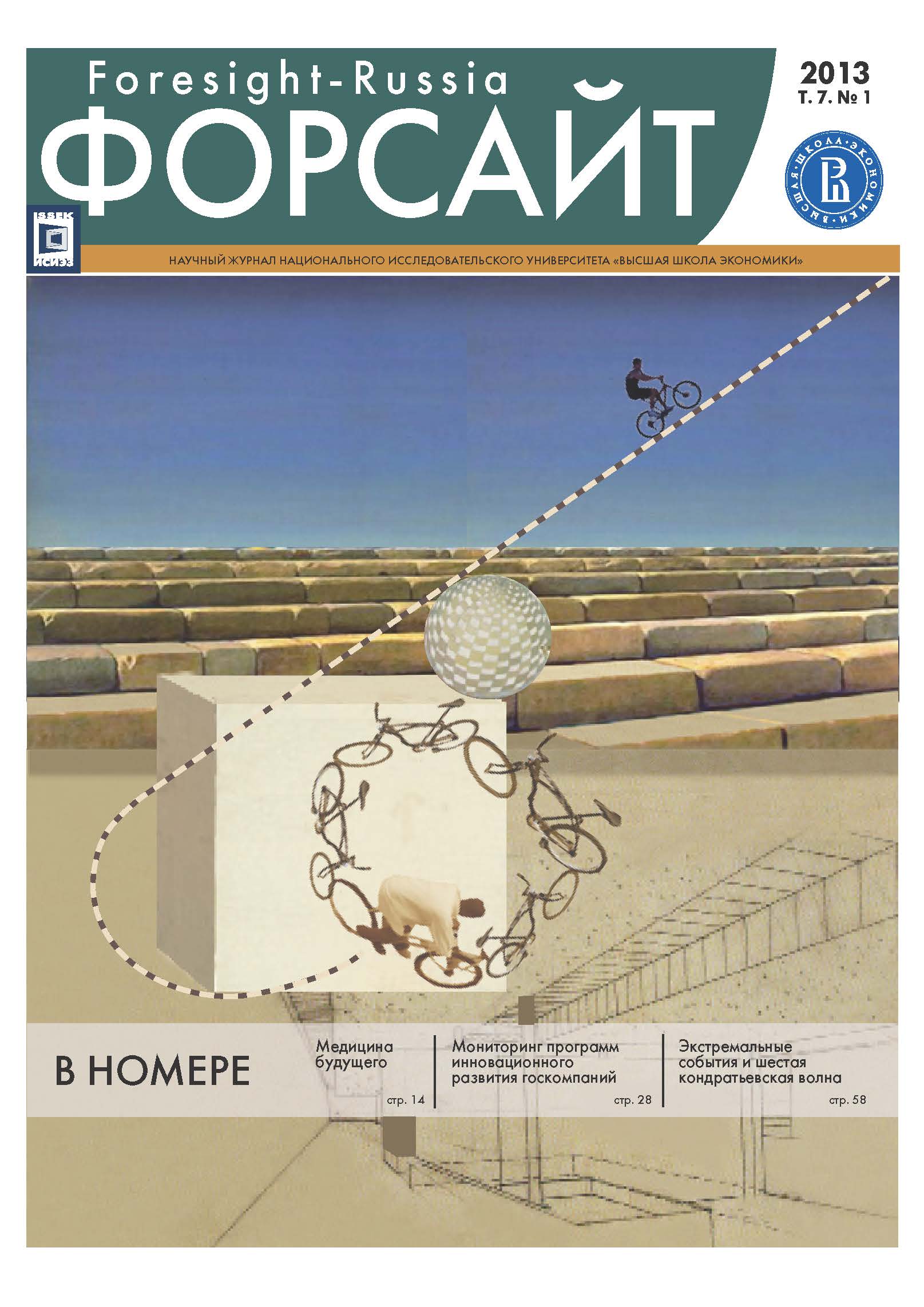Abstract
The ability to extract and use energy played a decisive role in the development of human civilization. Energy consumption is growing exponentially, thus the only way to avoid future energy crisis is to explore renewable, more abundant sources.
It is known that some technology fields, particularly information and communication technologies, develop according to the “accelerating acceleration” principle. This paper analyzes the applicability of this pattern to energy production and consumption. It assumes that the development of advanced storage technologies and “smart” power distribution will lead to the creation of “global energy network” (Enernet). With the Enernet, energy and power will become abundant and basically free, just like information and bandwidth are today thanks to the Internet. This creates the prerequisites for coming “energy singularity” (“energularity”), which could happen in the next century – in result the humanity will gain full control over all energy available on the planet, and will reach a new level of development (type I according to the Kardashev scale).
“Energularity” is similar in some ways to the concepts of the “technological singularity” (intelligence explosion) and “methuselarity” (annual longevity extension for more than one year). Achieving “energularity” seems fundamental to improving the global quality of life and to exploring the universe.
References
British Telecom (2005) Technology Timeline. London: British Telecom. Режим доступа: www.bt.com/technologytimeline (дата обращения 06 ноября 2012 г.).
Clarke A. (1984) Profiles of the Future: An Inquiry into the Limits of the Possible. New York, NY: Henry Holt and Company.
Cohen J., Stewart I. (2002) Evolving the Alien: The Science of Extraterrestrial Life. Ebury Press.
Cohn S. (1997) Too cheap to meter: An economic and philosophical analysis of the nuclear dream. SUNY series in Radical Social and Political Theory. New York, NY: State University of New York Press.
Cordeiro J. (2006) Energy 2020: A Vision of the Future//Creating Global Strategies for Humanity´s Future/Ed. Timothy C. Mack. Bethesda, MD: World Future Society. Р. 227-241.
Cordeiro J. (2010) The Future of Energy and the Energy of the Future. San Francisco, CA: Singularity Institute for Artificial Intelligence.
DeLong J. (2000) Cornucopia: The Pace of Economic Growth in the Twentieth Century. NBER Working Paper 7602. Cambridge, MA: NBER.
Dyson F. (1966) The Search for Extraterrestrial Technology//Perspectives in Modern Physics. New York, NY: John Wiley & Sons. Р. 641-655.
Foundation for the Future (2002) The Next Thousand Years. Bellevue, WA: Foundation for the Future.
Foundation for the Future (2007) Energy Challenges: The Next Thousand Years. Bellevue, WA: Foundation for the Future.
Fuller R. (1981) Critical Path. New York, NY: W.W. Norton & Company.
Glenn J., Gordon T. (2010) State of the Future 2010. Washington, DC: The Millennium Project. Режим доступа: www.StateOfTheFuture.org (дата обращения 26 сентября 2012 г.).
Good I. (1965) Speculations Concerning the First Ultraintelligent Machine//Advances in Computers. Vol. 6. Burlington, MA: Academic Press. P. 31-84.
Hawking S. (2002) The Theory of Everything: The Origin and Fate of the Universe. New York, NY: New Millennium Press.
Kahn H. et al. (1976) The Next 200 Years: A Scenario for America and the World. New York, NY: William Morrow and Company.
Kaku M. (2005) Parallel Worlds: The Science of Alternative Universes and Our Future in the Cosmos. New York, NY: Doubleday.
Kardashev N. (1964) Transmission of Information by Extraterrestrial Civilizations//Soviet Astronomy. Vol. 8. № 2. Р. 217-221.
Kim Y. (2008) Hwang's Law Phased Out//The Korea Times (09 September). Режим доступа: http://www.koreatimes.co.kr/www/news/biz/2008/09/123_30944.html (дата обращения 4 декабря 2012 г.).
Kurian G., Molitor G. (1996) Encyclopedia of the Future. New York, NY: Macmillan.
Kurzweil R. (1999) The Age of Spiritual Machines. New York, NY: Penguin Books.
Kurzweil R. (2005) The Singularity is Near: When Humans Transcend Biology, New York, NY: Viking.
Lasica J.D. (2004) The Engadget Interview: Niklas Zennstrom of Skype (08 November). Режим доступа: http://www.jdlasica.com/tag/skype/(дата обращения 5 декабря 2012 г.).
Maryniak G. (2012) Storage, Not Generation, is the Challenge to Renewable Energy//Forbes.com. Режим доступа: http://www.forbes.com/sites/singularity/2012/07/20/storage-not-generation-is-the-challenge-to-renewable-energy/(дата обращения 24 ноября 2012 г.).
Metcalfe R. (2007) The Enernet (unpublished presentation). Режим доступа: gigaom.com/cleantech/bob-metcalfe-welcome-to-the-enernet-1 (дата обращения 18 января 2012 г.).
Moorcock M. (1976) Tales From the End of Time. Berkley Publishing.
Nordhaus W. (1997) Do Real Output and Real Wage Measures Capture Reality? The History of Lighting Suggests Not//The Economics of New Goods. Chicago, IL: University of Chicago. Р. 27-70.
Parkin L. (2005) The Gallifrey Chronicles. BBC Books.
Romm J. (2011) Solar Power Much Cheaper to Produce Than Most Analysts Realize, Study Finds//ThinkProgess.org. Режим доступа: http://thinkprogress.org/climate/2011/12/11/387108/solar-power-much-cheaper-than-most-realize-study/(дата обращения 24 ноября 2012 г.).
Sachs E., Serdy J. (2006) Light Capture from Solar Cell Bus Bars. Paper presented at the Proceedings of the IEEE 4th World Conference on Photovoltaic Energy Conversion, Waikoloa, HI, May 2006.
Sagan C. (1973) The Cosmic Connection. New York, NY: Doubleday.
Sagan C. (1977) The Dragons of Eden: Speculations on the Evolution of Human Intelligence. New York, NY: Random House.
Simon J. (1996) The Ultimate Resource 2. Princeton, NJ: Princeton University Press.
Swirski P. (2006) The art and science of Stanislaw Lem. McGill-Queen's Press.
Vinge V. (1993) The Coming Technological Singularity//Whole Earth Review (Winter issue). Р. 88-95.
Wells H. (1902) The Discovery of the Future//Nature. Vol. 65. P. 326-331.
Zubrin R. (1999) Entering Space: Creating a Spacefaring Civilization. New York, NY: Jeremy P. Tarcher/Putnam.
de Gray A. (2008) The Singularity and the Methuselarity: Similarities and Differences. Lorton, VA: Methuselah Foundation.

This work is licensed under a Creative Commons Attribution 4.0 International License.

